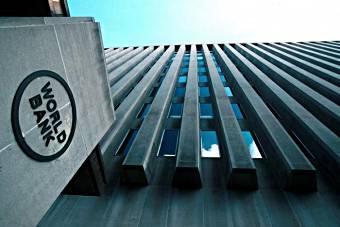Pakistan will miss growth target: WB

ISLAMABAD - After the International Monetary Fund (IMF) and the Asian Development Bank (ADB), the World Bank too has projected that Pakistan will miss the economic growth target of 5.7 percent during the current fiscal year (FY2017).
“The economy is projected to grow by 5.2 percent in FY2017,” the WB noted in its latest report “South Asia Economic Focus, Globalization Backlash”. On the demand side, the near-term growth outlook will primarily be supported by public and private consumption. Investment to GDP ratio will improve marginally due to CPEC and other public investment. On the supply side, impetus to growth is projected to come from services and the industrial sector. The services sector is expected to grow by 5.6 percent and the industrial sector is expected to grow by 6.1 percent in FY2017. After a weak performance in FY2016, the agriculture sector is expected to grow at 3.4 percent in FY2017.
The IMF in its latest report had observed Pakistan’s GDP growth at 5 percent for the FY2017. The Asian Development Bank (ADB) had also projected Pakistan’s economic growth at 5.2 percent for the current fiscal year. The government has forecast 5.7 percent growth target for the ongoing financial year. However, the growth would be nine years high, if it goes to around 5 percent.
The World Bank has also mentioned significant downside risks to the projected outlook that included upcoming national election in 2018, which might affect reform momentum and macroeconomic policy orientation. “Slower progress in much-needed structural reforms could weaken growth prospects. A stable PKR/US$ nominal exchange rate has resulted in appreciation of Real Effective Exchange Rate (REER). Furthermore, lingering uncertainty about the course of US economic policy and the possibility of a protracted global economic weakness, especially in the Euro area due to Brexit, could negatively affect exports. Pakistan is also vulnerable to any significant decline in remittance flows, particularly from oil-rich countries (around two thirds of all remittances), if oil prices remain depressed,” the WB noted.
The Bank has also observed that budget and current accounts deficits would enhance as against the projection of the government. The current account deficit is expected to widen from 1.2 percent of GDP in FY2016 to 2.2 percent in FY2017 and 2.4 percent by FY2019. The key contributor to this will be a widening of the trade deficit due to moderate growth in exports (due to weakening of exports competitiveness and global demand) and higher growth in imports due to increased economic activity.
The fiscal deficit is projected to be 4.8 percent in FY2017 as against 4.1 percent revised target of the government. This widening is primarily driven by slower increase in government tax revenues (both federal and provincial) coupled with decline in non-tax revenues.
Inflation has already bottomed out. Projected increases in economic activity and an expected gradual increase in energy prices will push up domestic prices. Inflation is projected to increase from 2.9 percent in FY2016 to 5 percent in FY2017 and 7 percent in FY2019, according to the report.
FDI flows will strengthen due to the accelerated implementation of CPEC projects. Official foreign exchange reserves are projected to decline to 3.2 months of imports by FY2019 due to larger current account deficit, and higher debt repayments (due to IMF repayments) in FY2018.
Low oil prices will also improve the current account deficit and create an environment conducive for a reduction in energy subsidies.





